Immigrant entrepreneurship in Sweden – a tool for economic integration?

The question of whether self-employment and entrepreneurship can be tools for integration into the labour market of migrants has been discussed throughout the literature by scholars of entrepreneurship, migration, and feminist scholars. For instance, Heilman and Chen (2003) argue that although entrepreneurship is viewed as an empowering tool for women and immigrant groups, there are several structural issues that may limit or block their success in the business scene: labour market issues such as stereotyping, discrimination, and glass ceiling may occur both in regular employment and in entrepreneurship (Heilman & Chen 2003:39). Therefore, although entrepreneurship can provide individuals with a way to gain career autonomy and control, it does not necessarily provide an escape for all the problems that migrants face in the labour market (Heilman & Chen 2003:360).
Researchers Bildt and Abbasian (2009) examine the extent to which entrepreneurship and self-employment can be sources of economic and social empowerment and integration of immigrant groups in Sweden. As a starting point for their research are the reasons that lead migrants, both men and women, to start a business in the first place, ranging from unemployment to a lack of suitable jobs and career opportunities in a gendered and discriminatory, closed labour market, the desire for personal and professional development, greater independence and freedom, or work within one’s field of interest (Bildt & Abbasian 2009:1). Within this context, entrepreneurship may have a positive impact on facilitating economic integration by facing the issue of unemployment, promoting growth, providing a chance to develop occupational skills, and by offering tools to improve the target group’s overall quality of life and health (Bildt & Abbasian 2009:2). Nevertheless, research shows that self-employment, in comparison to employment, also brings about several negative effects, such as the uncertainty of a stable income and economic security (Abbasian 2003). In the case of migrant-run businesses, statistics show that these have a lower economic turnout compared to other businesses (SCB 2015). Economists Fairlie and Lofstrom (2013) argue that there is some evidence that self-employment and entrepreneurship may be associated with some upward economic mobility for disadvantaged groups of migrants, particularly those characterized by low skill levels (Fairlie & Lofstrom 2013:33): they claim that immigrant entrepreneurs with high degree of human capital, including education and highly-skilled work experience, experience relative success in entrepreneurship compared to more disadvantaged groups.
In conclusion, we can state that whether entrepreneurship can be a tool for integration of immigrant groups in the labour market depends on a number of factors, including human capital, level of education and professional background, cultural capital, individual characteristics and local market opportunities.
References
Abbasian, S. & Bildt, C. (2009), Empowerment through entrepreneurship – a tool for integration among immigrant women? Jönköping International Business School, CISEG working paper series nr 6.
Fairlie, R. W., & Lofstrom, M. (2015). Immigration and entrepreneurship. In Handbook of the economics of international migration (Vol. 1, pp. 877-911). North-Holland.
Statistikmyndigheten – SCB (2015), “Färre kvinnor än män driver företag”, https://www.scb.se/hitta-statistik/artiklar/2017/Farre-kvinnor-an-man-driver-foretag/
Heilman, M. E., & Chen, J. J. (2003). Entrepreneurship as a solution: the allure of self-employment for women and minorities. Human Resources Management Review, 13(2), 347-364.
Image Source: https://entreprenorskapsforum.se/en/activity/startup-migrants-entrepreneurial-solutions-for-integration/


